The glorious past of Kronstadt is rich in important historical events; it is not for nothing that it bears the honorary title of "City of Military Glory". The formation and development of the Russian fleet is associated with it, many dramatic events took place on its territory.
At first, Kronstadt may seem like a harsh military garrison - the docks, piers, ships and barracks buildings of the 19th century immediately catch the eye of tourists. However, there are other remarkable places here: the magnificent Naval Cathedral, the elegant Italian Palace, memorial monuments and picturesque embankments.
After walking around the city and getting acquainted with the expositions of museums, you can go on a tour of the forts, during which the guide will tell you many interesting facts from the past of the city.
What to see and where to go in Kronstadt?
The most interesting and beautiful places for walking. Photos and a short description.
- Naval Cathedral of St. Nicholas
- Cast iron pavement
- Bypass channel
- Blue bridge and Kronstadt footstock
- Makarovsky bridge
- Monument to the blockade stickleback
- Monument to S. O. Makarov
- Monument to Admiral Fyodor Ushakov
- Petrovsky park and monument to Peter I
- Catherine Park
- Summer garden
- Italian palace
- Italian pond
- Gostiny Dvor
- St. Vladimir's Cathedral
- Drama Theater of the Baltic Fleet
- Lighthouse Service Museum
- Kronstadt Maritime Museum
- Museum of the History of Kronstadt
- Museum-apartment of John of Kronstadt
- Kronstadt fortress
- Kronstadt Admiralty
- Petrovsky dock
- Petrovskaya pier
- Complex of protective structures
- Wooden lighthouse
- Lighthouse Tolbukhin
- City Beach
- Reserve Western Kotlin
- Forts of Kronstadt
Naval Cathedral of St. Nicholas
A magnificent temple in the neo-Byzantine style, built in 1913 according to the plan of V. A. Kosyakov. In the 1930s, the cathedral suffered a lot: after closing, bells and crosses were removed from it, frescoes and mosaic icons were covered with plaster, and relics were removed from the gallery of naval glory. Since 2002, its restoration began. Today, the renovated temple shines as if it was erected several years ago.
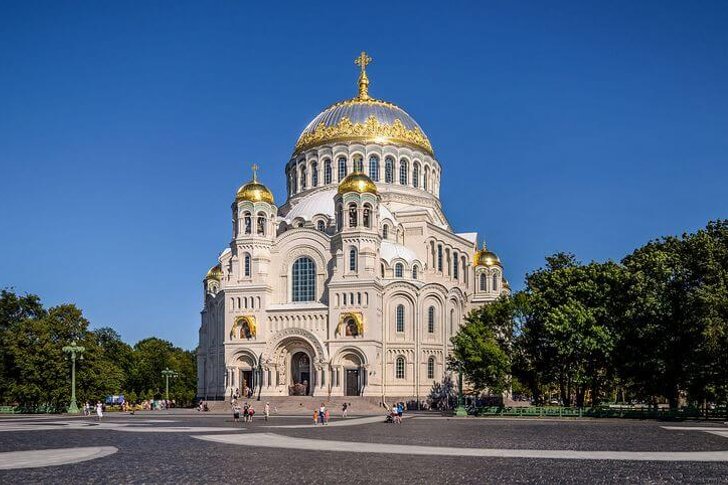
Cast iron pavement
A small section of Anchor Square with a length of about 200 meters, lined with cast-iron details - checkers. It is unique because there is nowhere else in the world to find such masonry. The bridge was created in the 19th century in imitation of the one that General V.P. Lebedev saw in Boston and New York during his trip to the USA. During the restoration, many elements were replaced, but in some places the original checkers were left.

bypass channel
It was built for the needs of the Admiralty, and eventually received the status of a historical monument. The channel stretches for 3 km from the Italian Pond to the harbor. Several bridges are thrown across it, which were originally diverting. The extensions on the bends are made on purpose: oncoming vessels can diverge freely. Since 2005, on the western wall, near the Blue Bridge, there has been a monument to stickleback - a fish that saved residents from starvation during the blockade.

Blue bridge and Kronstadt footstock
The Blue Bridge spans the Obvodny Canal. The construction began to be erected in the 1780s and was completed only in 1801. Attached to one of its supports is the Kronstadt footstock, which was used to measure the level of the Baltic Sea. In the Soviet Union, all absolute heights were measured from the zero mark of this tide gauge. The footstock in Kronstadt is considered one of the oldest measuring posts.
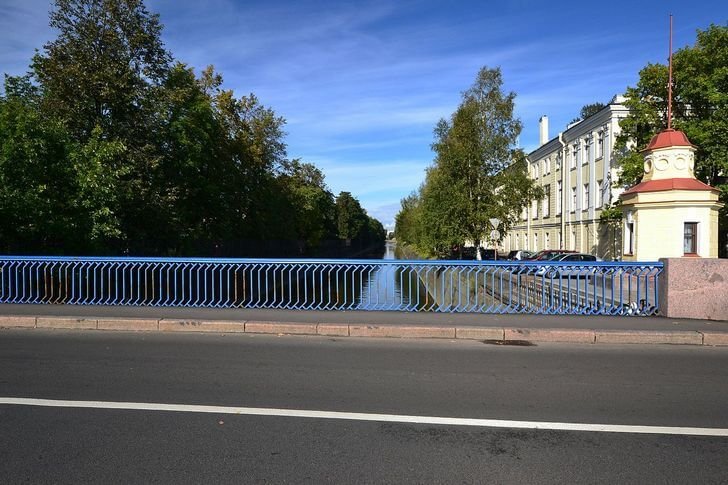
Makarovsky bridge
The bridge is located in the central part of Kronstadt; it was built by the workers of the local Marine Plant in 1912. It was erected specifically for the visit of Tsar Nicholas II, so that it would be convenient for the ruler to get by car to the Naval Cathedral from Peter's Quay. The construction stands aside from the Summer Garden; it is part of the architectural ensemble of Anchor Square. At the moment, the bridge is an object of cultural heritage of the Russian Federation.
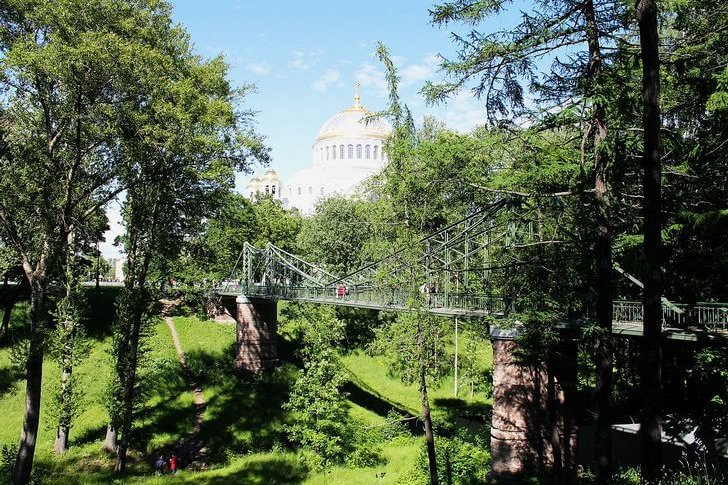
Monument to the blockade stickleback
Sculptural composition of 2005, created in honor of stickleback - a small fish that saved thousands of people from starvation during the siege of Leningrad. In those years, employees of the 2nd Leningrad Medical Institute even developed the drug "stickleback fat", which helped against injuries and burns. The monument is located near the Kronstadt footstock. It was designed by N.V. Chepurny.
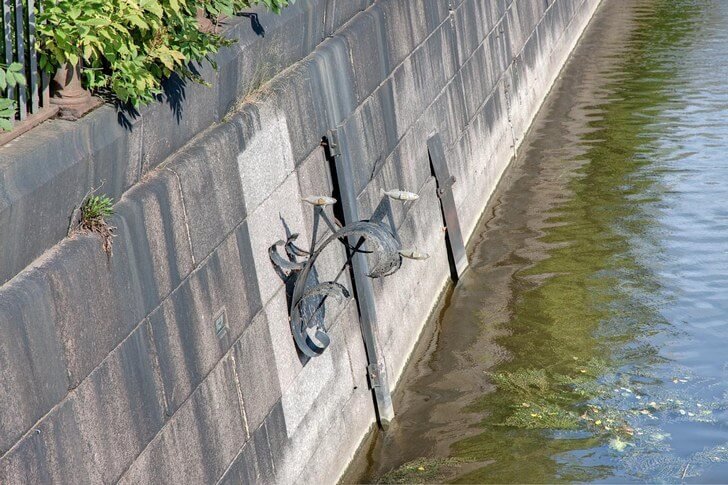
Monument to S. O. Makarov
The outstanding Russian admiral and explorer of the Arctic S. O. Makarov died in 1904 on board the battleship Petropavlovsk near Port Arthur (the ship was blown up by a mine). In 1913, a monument in his honor appeared in Kronstadt. The opening of the monument was attended by Emperor Nicholas II with his family. The figure of the admiral rises on a 5-meter pedestal. From the side, it seems as if the wind is ruffling the skirts of his long overcoat.
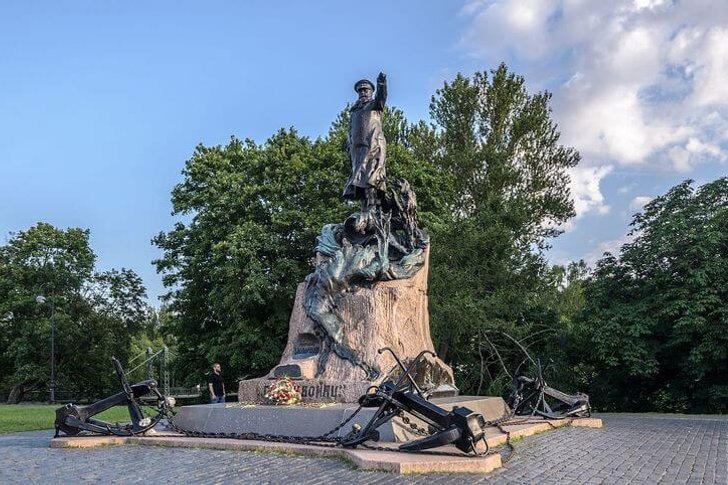
Monument to Admiral Fyodor Ushakov
For several years there were disputes over the location of the monument to Fyodor Ushakov. In addition, they chose from two ready-made projects. The sculptor Vladimir Gorevoy won: his work appeared at the St. Nicholas Naval Cathedral in 2015. The opening ceremony was timed to coincide with the 270th anniversary of the admiral and the Day of Military Glory. The bronze sculpture has a height of 3 meters, and is placed on a pedestal of polished granite.
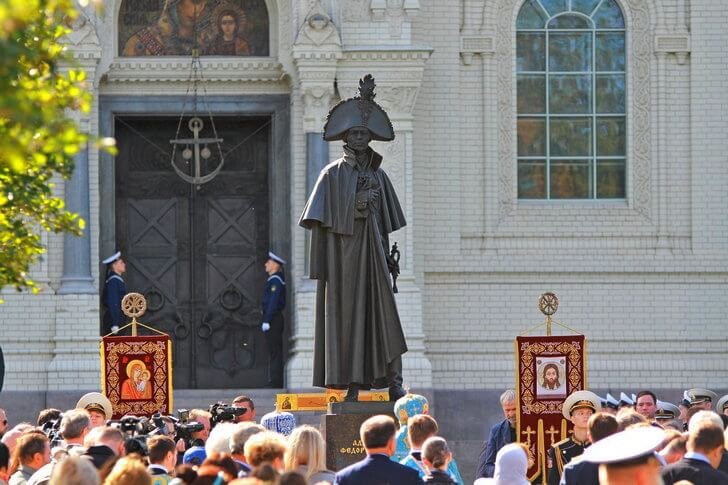
Petrovsky park and monument to Peter I
The park is located in the central part of Kronstadt. It was defeated in the 19th century according to the plan of F. F. Bellingshausen, the military governor of the city. The central composition of the square is the monument to Peter I, created in 1841 by the will of Nicholas I. The author of the project was the French sculptor T. N. Jacques. In fact, the park gradually formed around this monument.

Catherine Park
It occupies almost 3 hectares in the historical center of the city and belongs to the objects of cultural heritage of federal significance. It was destroyed in the middle of the last century. Then the street along which the park runs was called Bolshaya Ekaterininskaya, hence the modern name of the attraction. The territory is fenced with a forged low fence. There are several monuments on the pedestrian alley.

Summer garden
The oldest square in Kronstadt, a historical monument of the 18th–19th centuries. It was created back in the time of Peter I. At the beginning of the 18th century, the so-called “royal city” was located here with the house of the sovereign and the dwellings of his entourage. Once there were greenhouses with palm trees, apricots, pineapples and other cultures unusual for the northern climate. The park became a city garden in 1806.

Italian palace
The palace complex on Makarovskaya Street, which is the oldest building in the city. It was erected in 1724 for Prince A. D. Menshikov according to the project of I. F. Braunstein. The architectural style of the building is eclectic. Its facade was decorated with pilasters, balustrades and bas-reliefs. After a fire in 1926, it lost part of its historical appearance. Opposite the palace is the Italian Pond, from where the Obvodny Canal originates.
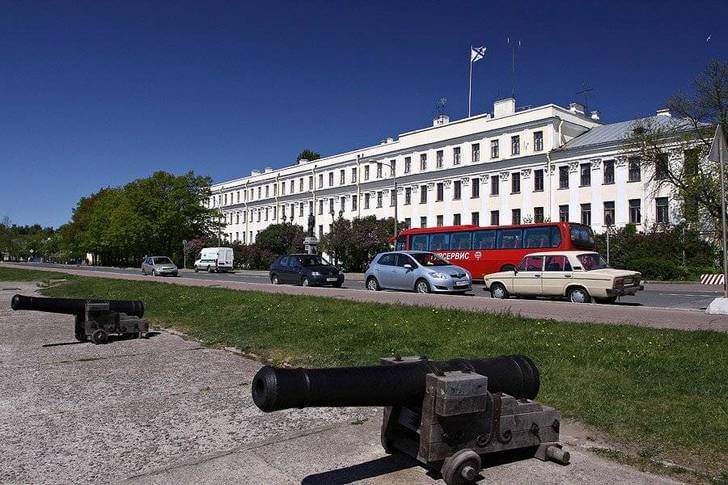
Italian pond
In the past, the reservoir was an important part of the trade route. Merchant ships wintered in the pond, from here goods were delivered to Gostiny Dvor. There are many attractions around. The main one is the Italian Palace on the northern shore. The monument to the explorer Pakhtusov, the bust of Aivazovsky, the Fish Rows, Dutch cuisine, the port crane of the 19th century - all these objects should be paid attention to during the tour.
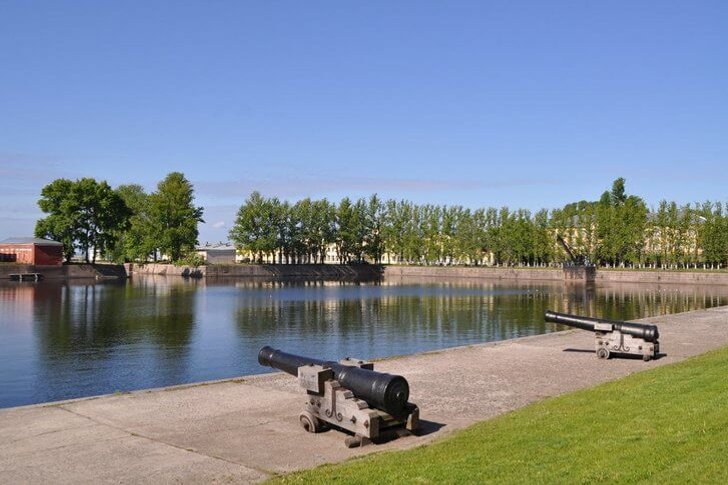
Gostiny Dvor
The building of the 19th century, which traditionally housed shopping arcades. Such buildings were very typical for Russian provincial cities, therefore, today almost everyone has their own Gostiny Dvor. The complex was erected by order of Nicholas I, since the sovereign, during his visit to Kronstadt, was outraged by the terrible state of this place and wished to see a new building here.
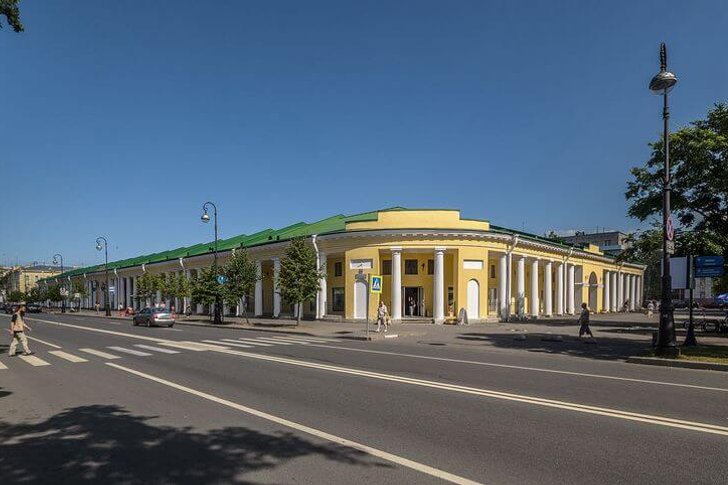
St. Vladimir's Cathedral
Orthodox church of the 19th century, built in neo-Russian and neo-Byzantine styles. Previously, there was a wooden church in its place. The main shrine of the cathedral is the Vladimir Icon of the Mother of God, created by order of Peter I. In the 1950s, the building was blown up, but it was not possible to completely destroy it, as there was a threat to nearby houses. Since 1990, after the transfer of the Russian Orthodox Church, restoration work has been carried out in the temple.

Drama Theater of the Baltic Fleet
Marshal K. E. Voroshilov initiated the creation of the theater in 1930. For 1418 days of the war, the theater showed over six thousand performances and concerts. During the blockade, most of the troupe died. After the war, the theater was moved to the Baltic city of Liepaja. He returned to his homeland only after the collapse of the Soviet Union. Now the theater occupies a building on Sovetskaya Street, tickets for performances are sold there.
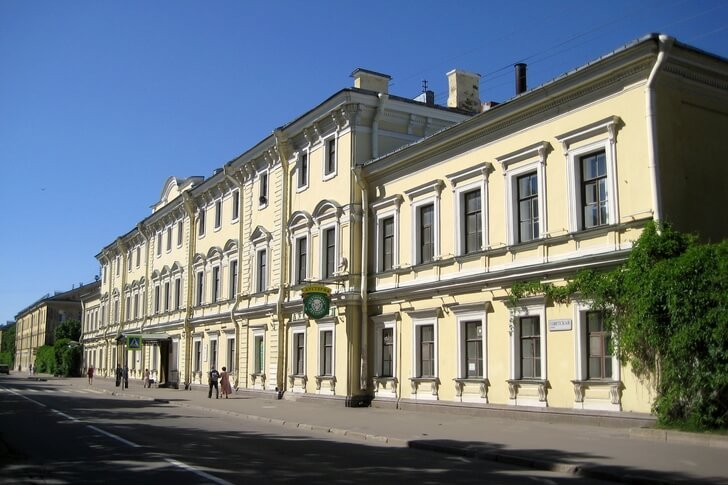
Lighthouse Service Museum
The first lighthouse museum in the country. Located in the restored barracks of Fort Constantine. The exposition clearly demonstrates all 300 years of the history of the lighthouse service. Models and photographs of lighthouses, huge lenses, navigation signs - these and other functioning rarities are found on the shelves and stands of the museum. The museum is accessible in winter, and the duration of the guided tour is about half an hour.
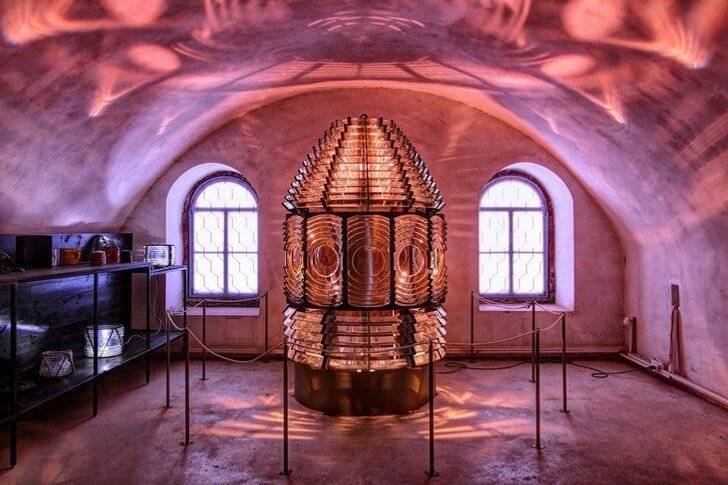
Kronstadt Maritime Museum
The exposition is devoted to the military history of the city, the development of diving in Russia, the blockade of Leningrad and the events of the Second World War. The museum appeared in 2012 on Kotlin Island thanks to the efforts of enthusiasts and the financial support of Fertoing. The collection includes diving equipment of past years, machinery, equipment, cannonballs raised from the bottom of the bay, documents, personal belongings of divers.

Museum of the History of Kronstadt
The new museum on Yakornaya Street, opened in 2014. Its exposition is entirely devoted to the history of the city. Here visitors can learn about the construction of Kronstadt, the life of sailors and ordinary residents, as well as see exhibits that are several hundred years old. The collection was collected by enthusiasts of the local club of local historians. It is thanks to their efforts that this museum was born.
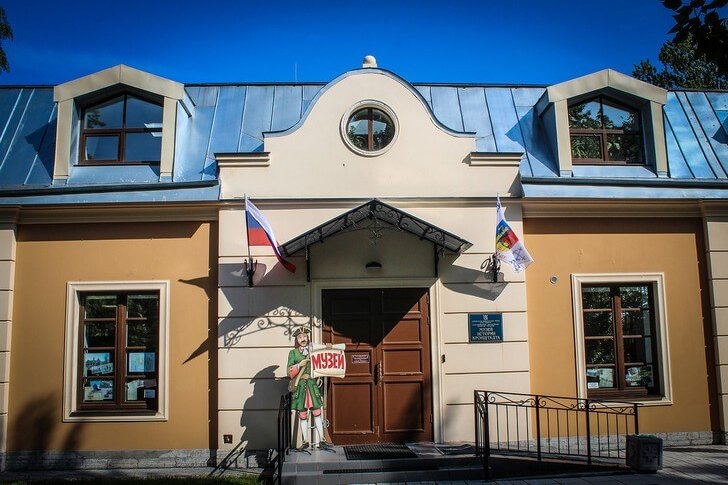
Museum-apartment of John of Kronstadt
John of Kronstadt is a priest and rector of St. Andrew's Cathedral, who has earned people's love and recognition for his good deeds. It was said that he had a special gift and could heal people. Thousands of people gathered for his services, and his apartment became a center of pilgrimage. In 1964, John of Kronstadt was canonized, and in 1990, the ROC confirmed his elevation to the rank of saint.

Kronstadt fortress
The Kronstadt fortress is an architectural monument of the 18th–19th centuries. Only some of its fragments have survived to this day. Initially, the fortifications were wooden, later they were replaced with stone ones. The building was destroyed in the flood of 1824, when almost the entire city was under water. As a result of those events, weapons were washed into the sea, and many soldiers of the garrison died.

Kronstadt Admiralty
The building of the Admiralty was built in 1797 by decree of Catherine II. It includes a whole complex of buildings, including the part of the Obvodny Canal lined with granite, behind which there are officer corps. At one time, the Admiralty occupied 25% of the territory of the entire Kronstadt. At the moment, access to tourists to the complex is closed, as it is under the jurisdiction of the Ministry of Defense.
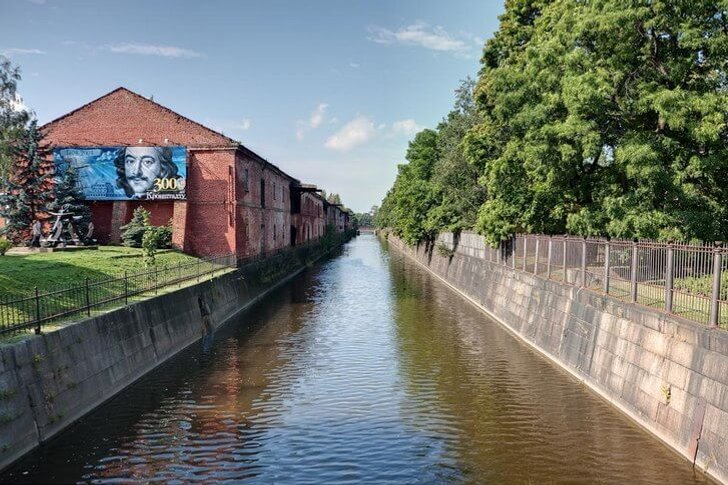
petrovsky dock
The construction of the dock began under Peter I, so it can rightfully be considered one of the oldest structures of this type in Russia. The harbor was designed for the simultaneous stay of 10 ships; it served until 2008. Today, Petrovsky Dock is a historical monument, most of its structures are in a very neglected state.
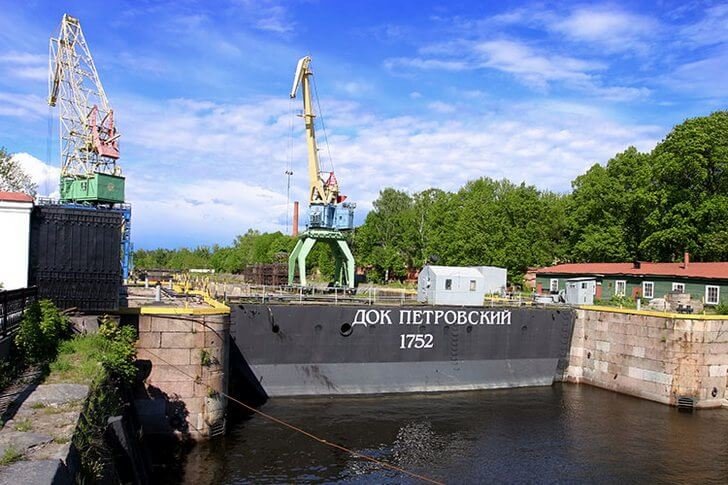
Petrovskaya pier
It is called the main sea gates of Kronstadt. Construction was carried out in the 20s of the century before last according to the project of engineer Andrey Gotman. The pier acquired its current appearance only 60 years later after a series of reconstructions. Cast-iron vases on pedestals, cannons from the Crimean War, impressive anchors connected by chains are the main decorations of the pier.
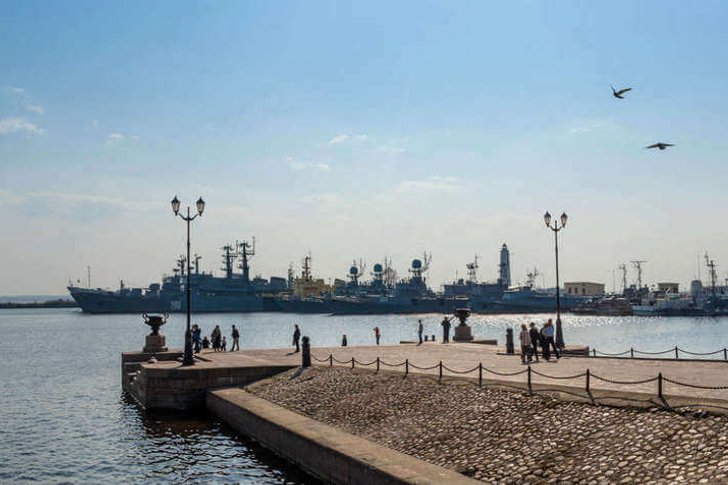
Complex of protective structures
Since St. Petersburg and neighboring cities are located in an area with an increased risk of flooding, it was necessary to create funds from the elements. Water and navigation facilities allow you to control the Gulf of Finland and the Neva Bay. In addition, dams built over several decades have another practical use: they are used as transport routes. And in 2011, an additional car tunnel was opened in the southern part of the complex.
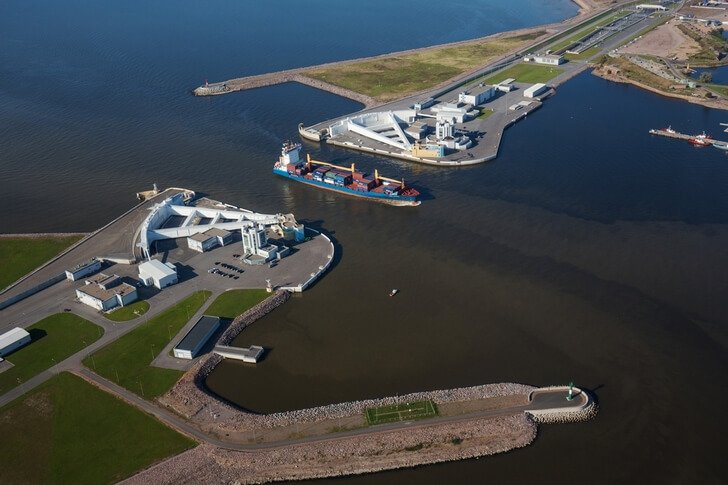
wooden lighthouse
The current lighthouse on the Petrovsky Canal, which is a historical monument. Due to the fact that the building is used for its intended purpose, it is impossible to enter its territory. The lighthouse was erected in the first half of the 18th century; it has survived to this day far from being in perfect condition. The building is clearly visible from a pleasure boat, so you can admire the tower during a sea excursion.
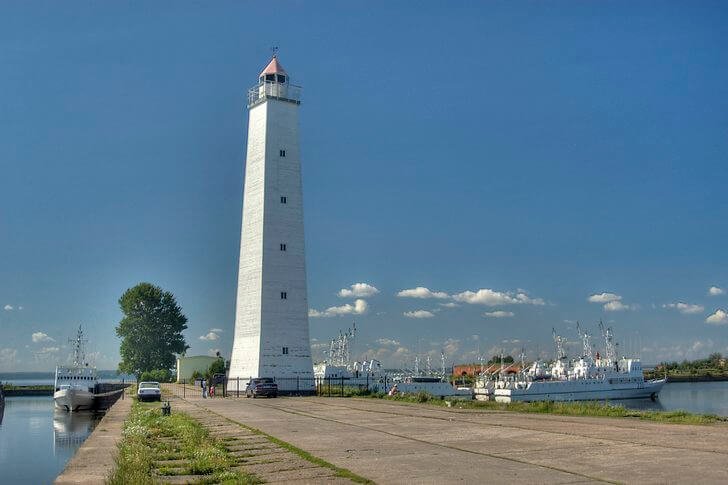
Lighthouse Tolbukhin
The structure was erected by order of Peter I (and according to his own sketch) in 1719 on an artificial island. Initially, it was wooden, the stone building was built a century later - in 1810. The design is considered one of the oldest Russian lighthouses. It is clearly visible when approaching St. Petersburg from the Baltic Sea during a sea excursion.

City Beach
The most popular beach in the city is located near the Leningrad pier. Clean sand, convenient entry into the water and shallow water attract vacationers with children. However, it is unlikely that you will be able to meet crowds of people on the beach: remoteness from the center does its job. Wireless Internet is available throughout the territory, there are sunbeds and umbrellas from the sun. Lifeguards are on duty during the swimming season.
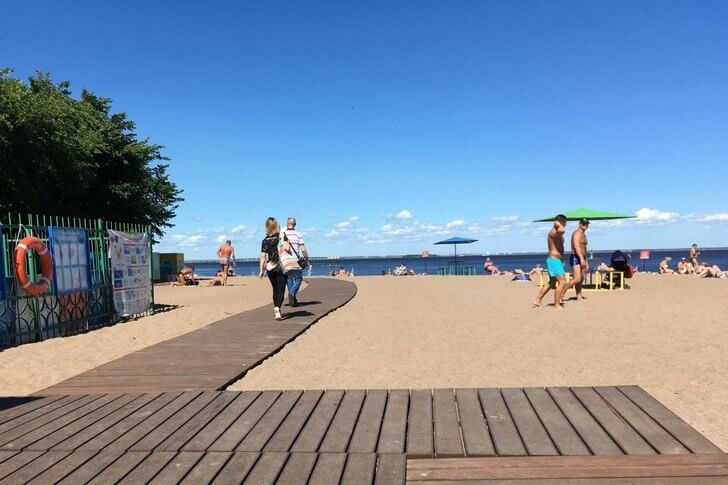
Reserve "Western Kotlin"
102 hectares of Kotlin Island have been turned into a state reserve since 2012. The object is of regional importance and was created to preserve coastal ridges, black alder forests, as well as psammophyte plant communities on sandy coasts. The coastline here is constantly changing: the alluvium forms sandy beaches, and the erosion forms pebble ones. A pedestrian zone runs along the territory of the reserve from the fort "Shanz".
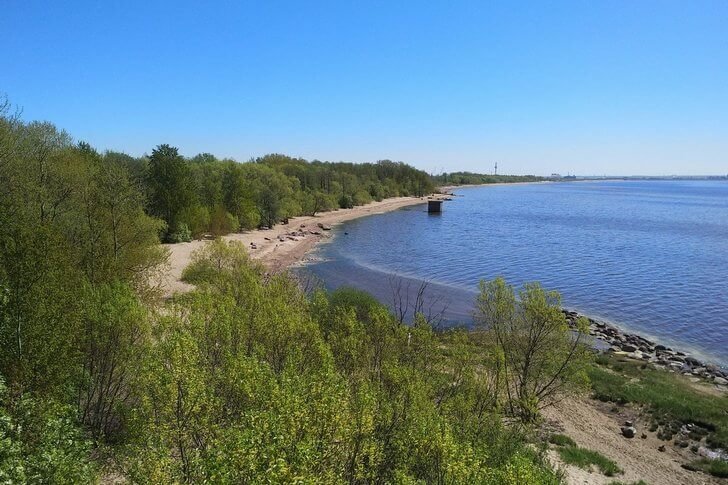
Forts of Kronstadt
Defensive structures erected on the northern and southern sides of Kotlin Island and protecting the fortress city from the sea. Their construction began under Peter I and continued under other rulers. The best way to see the forts is to go on a sea voyage on a pleasure boat that alternately passes by the forts and even stops at certain places.
